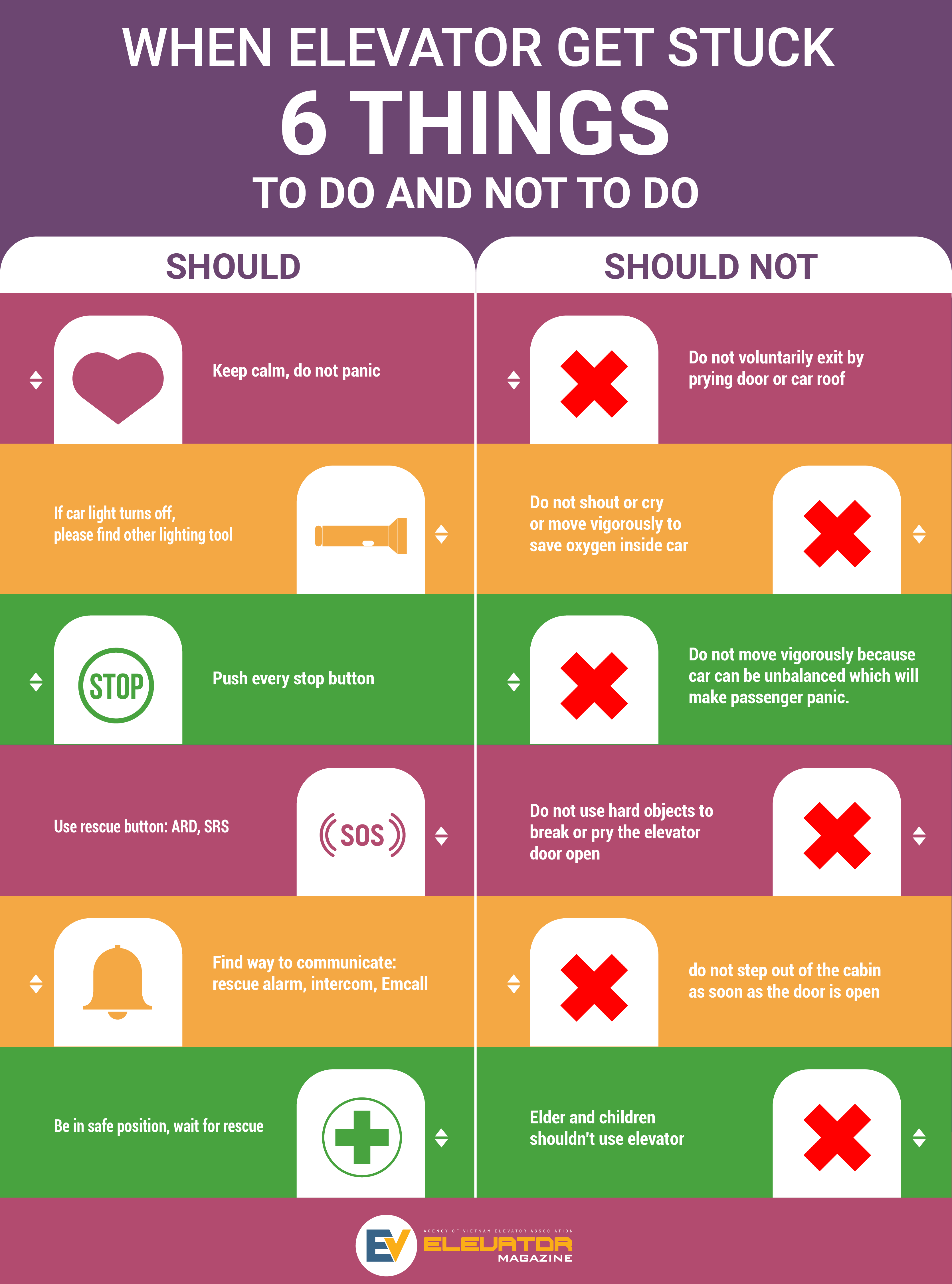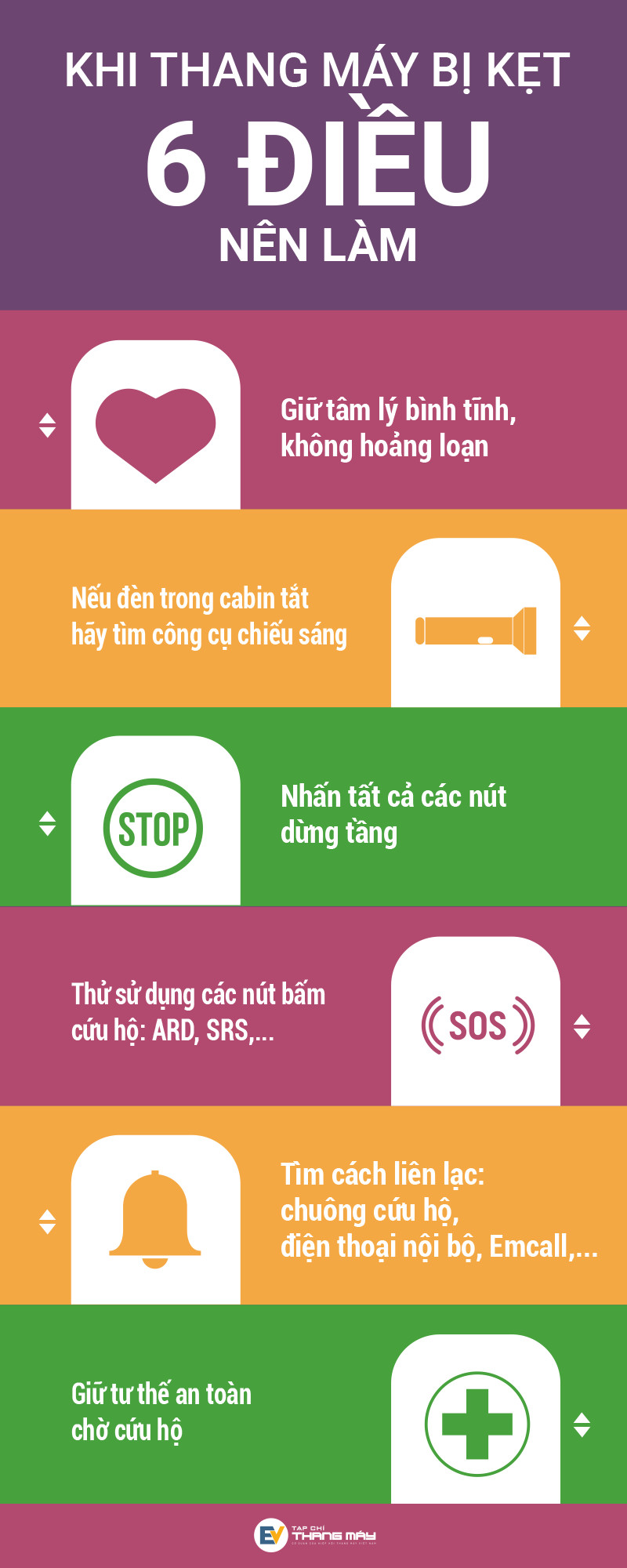It is estimated that every 3 days, the world’s elevators transport nearly as many people as the world’s population (7 billion people). This makes elevators the most frequently used form of transportation in the world. The more you use it, the higher the risk, so what are the risks that elevator users should be aware of?
According to statistics, elevator accidents are extremely rare, with the accident rate when taking the elevator is only 0.00000015%, that is, about 6.7 million times of elevator movement, only one accident. The majority of elevator accidents that cause death and injury occur during installation and maintenance by workers, followed by those who get stuck in the elevator door or lose their footing when the elevator stops halfway between two floors.
Thereby, it can be seen that moving by elevator is very safe compared to other means of transportation. However, when an incident occurs, it always makes society insecure because of the seriousness of the cases. Causes of danger to users such as being stuck in the elevator door, missing a foot when the elevator stops in the middle of two floors, falling elevators, etc. happens to be relatively large. Therefore, whether using elevators at home or in large buildings, users should pay attention to avoid unsafe situations.
– Equip with common knowledge about elevators to have understanding and direction to handle in emergency situations.

The lying position reduces the risk of injury when the elevator is speeding or falling
– Focus on observing the elevator when in use, avoid inadvertent situations leading to tripping, jamming the elevator door, stepping through the floor door when the cabin has not returned to the floor, …
– When you see signs that the door is jammed, the elevator cabin stops at an incorrect floor, unusual noises, etc., do not use the elevator and notify the person in charge of the elevator.
– When moving, if the elevator cabin shakes unsteadily or has abnormal noises, immediately press the stop command at all floors to quickly exit.
– Observe the elevator control panel to capture rescue features such as ARD (Automatic Rescue Device), SRS (Self Rescue System), Emcall, internal phone, alarm, … to use in case of an accident. power failure, stuck, etc


The elevator cabin is a closed and narrow space, this is also a place with many potential risks from bad guys. Especially for elevators in buildings, commercial centers, … when the elevator users are crowded, it is difficult to control.
Crowded jostling in the elevator cabin can pose a potential risk of pickpocketing and groping. Or when you are away, you are also vulnerable to threats of property or sexual assault. So what should we do to avoid risky situations from bad guys?
– Observe the elevator cabin to see if there is a CCTV camera in case of bad situations that may have reported data.
– If the cabin wall is a mirror, you can take advantage of it to observe the people around you, avoid pickpocketing situations or actively take precautions when other people behave abnormally.
– Observe the control panel to identify the rescue buttons, emergency alarms to promptly use when there is a dangerous situation.
– Prepare legal self-defense tools in case of unexpected situations.
– At times of high risk such as late at night, deserted, but you see the person accompanying the cabin showing suspicious signs, do not enter the cabin or exit the cabin as quickly as possible, you can seek assistance from the security guard. buildings, relatives, etc. to accompany to reduce the risk of danger.
Regardless of the incident situations from machines or other people attacking, there are also many situations where there is a risk in the elevator that the problem comes from itself. These problems are often related to health conditions such as: pregnancy, elevator sickness, stroke, sudden illness (heart attack, stomach pain, …) fear of crowds,…
Because the elevator is an enclosed space, completely separate during travel, everyone needs to be prepared for unexpected situations that happen to their health. With syndromes due to space such as fear of narrow and tight spaces, fear of crowds, if you have the option to go by stairs or escalators conveniently, you should choose. The situation is force majeure, you should take a deep breath, try to stay calm, if the stairs are made of glass, you can observe in it instead of focusing on the current space, you should also think about funny things or Talk to a friend to distract yourself from your own fear.
As for the risk of stroke, heart attack or sudden stomachache, or you are pregnant, you should take the initiative to prevent it. Limit the use of elevators alone, recognize alarm and rescue buttons to use when in an emergency, etc.
Especially for the elderly and children, special care should be taken in using the elevator. Households and building managers need detailed instructions on how to use the elevator, the options for handling in the event of an unexpected incident, and it is best not to let the elderly and children ride the elevator alone.
For elevators in private homes with elderly people, young children, pregnant women or patients, they should be equipped with a Stroke Warning System (SWS) that automatically activates when someone trapped in the cabin loses consciousness. consciousness (stroke, syncope, etc.). SWS will send a message to the elevator maintenance unit service center for timely rescue.
In addition to the above risks, which have the potential to occur more often, we can also face risks from the outside while riding the elevator, although these situations are very rare: fire, earthquake, … In those situations, experts warn you not to use the elevator because the danger from being stuck in the elevator will be much higher than usual. However, there will also be unexpected situations that occur while you are using the elevator, when you should take the same measures with the situation of being stuck in the elevator as above. The most important thing is to keep a calm psychological state, to avoid panic leading to not taking advantage of the opportunities to be rescued.
Although the earthquake rate in Vietnam is quite low, it doesn’t mean that it doesn’t happen, you can read more about getting stuck in elevators due to earthquakes here: Earthquakes and entanglement concerns in an elevator in Japan
All risks are at risk when you travel by elevator even though the odds are very low. Therefore, when using this vehicle, you also need to be prepared and focused, to avoid being distracted and subjective leading to unfortunate situations. With a home elevator, you should choose a quality elevator, equipped with safety features to avoid unexpected incidents.



